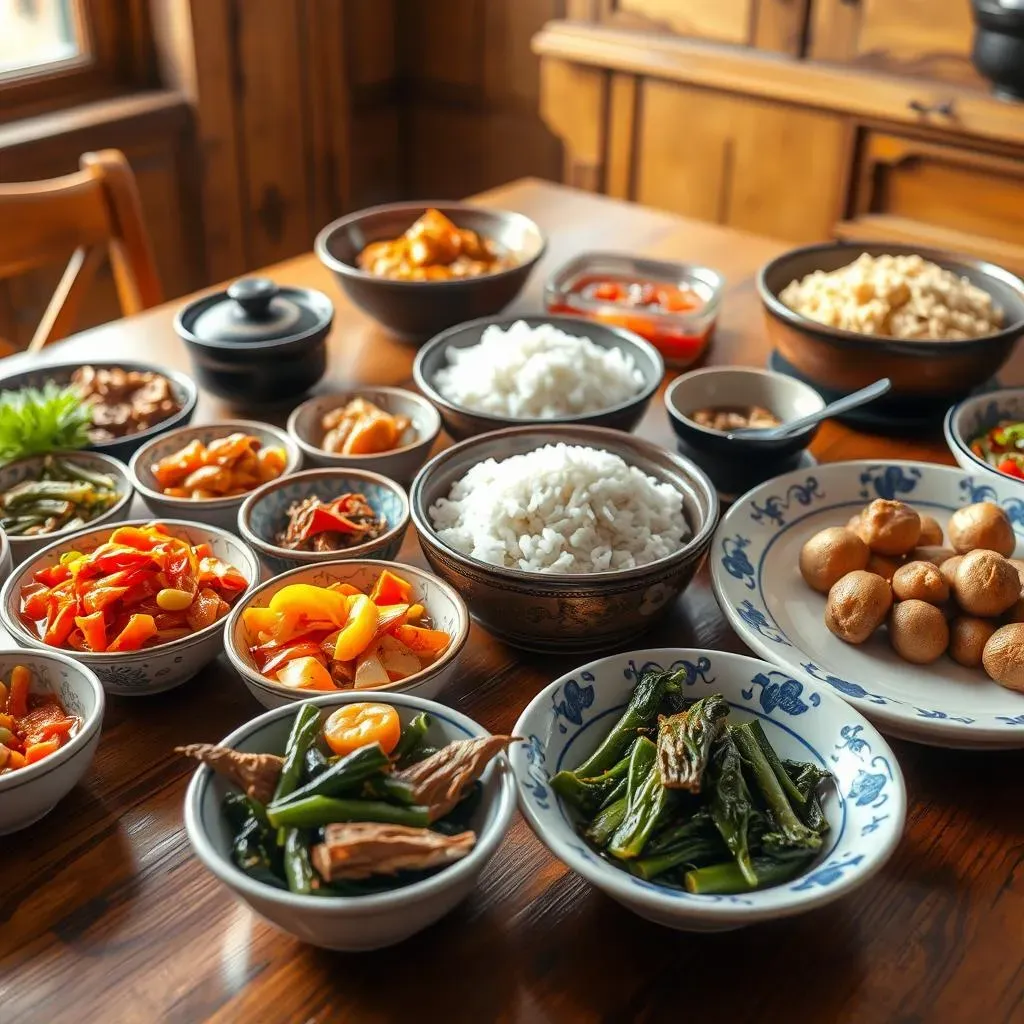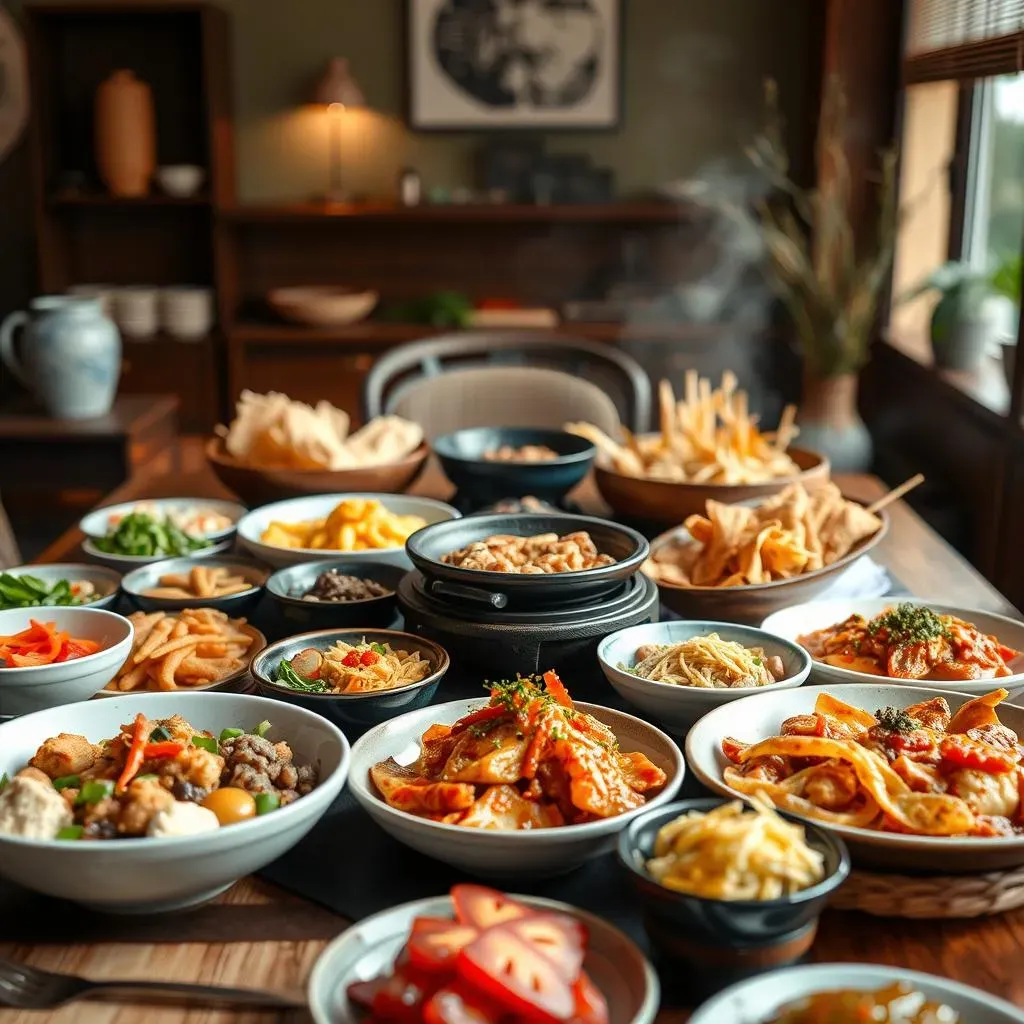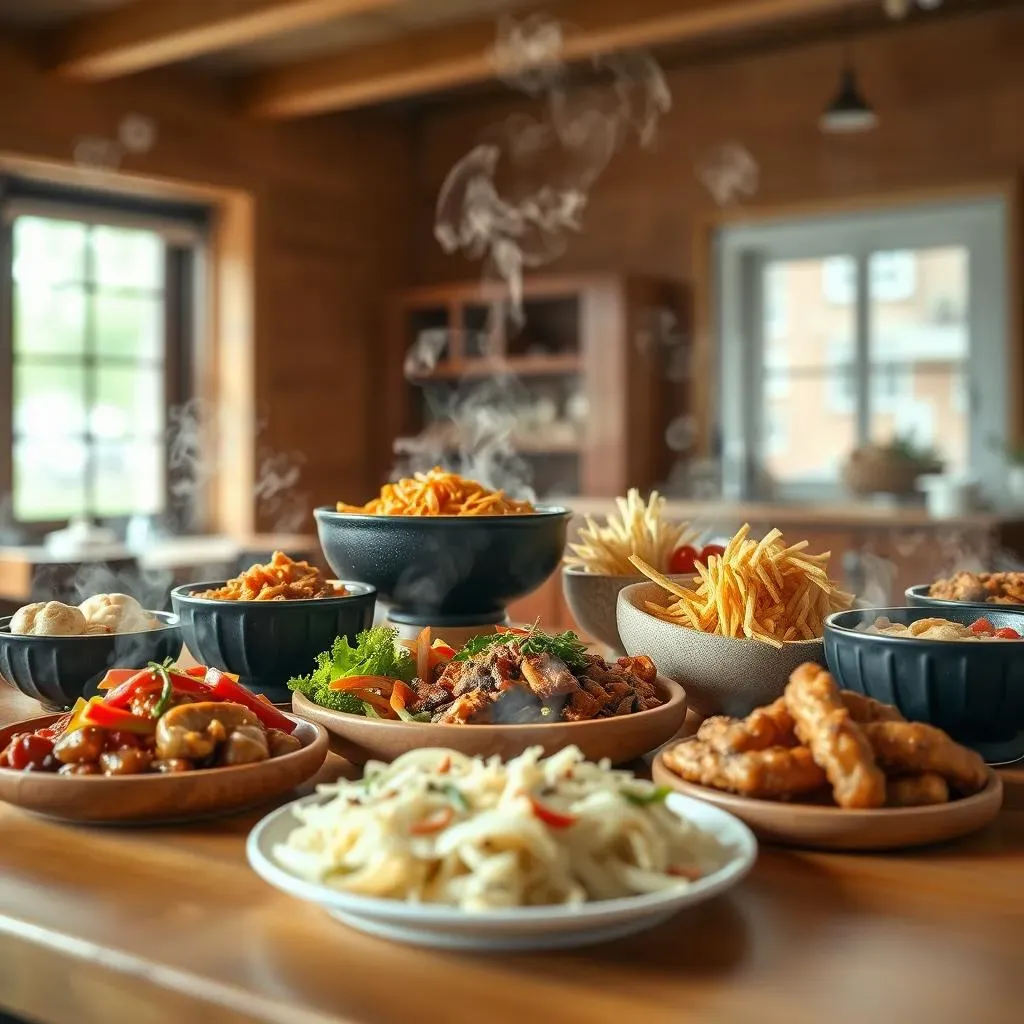Table of Contents
Tired of the same old boring lunches? Craving something with a kick? Let's face it, meal prepping can feel like a chore, but it doesn't have to be. What if I told you that you could have a week of delicious, exciting meals without spending hours in the kitchen? That's where Korean cuisine comes in. It's not just about kimchi (though we love that too!). Korean food offers a fantastic array of flavors, from spicy to savory, and it’s perfect for meal prepping. This guide will walk you through how to create your own flavor-packed Korean meal prep plan. We'll cover essential tips, how to balance those amazing Korean flavors, and even give you a sample week menu to get you started. Get ready to ditch the sad desk lunches and embrace the vibrant world of Korean meal prep ideas. Think of it like a flavor adventure, and you're the captain! Let’s get cooking!
General Tips for Korean Meal Prep

General Tips for Korean Meal Prep
Embrace the Banchan
Okay, so, here's the thing about Korean food: it's all about the sides! These little dishes, called banchan, are your secret weapon for awesome meal prep. Think of them as the supporting cast of your meal, adding tons of flavor and variety. The best part? Many of them, like kimchi and pickled veggies, last for ages in the fridge. Making a big batch of a few different banchan at the start of the week is a game-changer. You can mix and match them with your main dishes all week long. It is like having a mini-buffet in your fridge, ready to go!
And don't be afraid to experiment with different banchan recipes! There are so many options beyond just kimchi. You can try seasoned spinach (sigeumchi namul), braised potatoes (gamja jorim), or even some spicy cucumber salad (oi muchim). The variety is endless and it’s a great way to add nutrients to your meal. I usually make 3 or 4 different types of banchan on Sunday, and they make my weekdays so much easier and tastier. Trust me, once you get into the banchan groove, you'll never look back.
Banchan Type | Shelf Life | Notes |
|---|---|---|
Kimchi | Weeks | Fermented, tangy, spicy |
Pickled Vegetables | Weeks | Crunchy, sour, refreshing |
Seasoned Spinach (Sigeumchi Namul) | 3-5 Days | Savory, nutty, mild |
Braised Potatoes (Gamja Jorim) | 5-7 Days | Sweet, savory, soft |
Flavor Balancing Act
Korean food is a party in your mouth, but you need to make sure all the guests get along. What I mean is, you need to balance the flavors. A good Korean meal has a mix of spicy, mild, rich, and tangy. You don't want everything to be super spicy, or your taste buds will get tired. For example, if you're having a spicy main dish, pair it with a mild side like steamed rice or a simple soup. And always have something tangy, like kimchi or pickled radish, to cut through the richness. Think of it like a well-balanced musical score; you need the highs, lows, and everything in between to make it sound good.
It's also important to consider textures. You want some crunch, some chewiness, and some softness. This is why Korean meals often have a variety of side dishes with different textures. For example, you might have crunchy kimchi, soft braised tofu, and chewy rice cakes all in one meal. Variety is the spice of life, and that's especially true with Korean food. So, when you're planning your meal prep, think about how all the flavors and textures will work together. A little planning goes a long way in making your meals not just tasty but also satisfying.
- Balance spicy with mild.
- Mix rich with tangy.
- Vary textures for interest.
Korean Menu Planning for 1 week: Flavor & Balance

Korean Menu Planning for 1 week: Flavor & Balance
Building Your Korean Meal Blueprint
Okay, so you've got the banchan basics down, and you're ready to plan a whole week of Korean food, right? Don't panic! It's not as hard as it sounds. The key is to think of each meal as having a few key parts. You'll need your main protein (like beef, chicken, or tofu), a carb (usually rice or noodles), and then your banchan to fill out the meal. The best way to approach this is to choose a main dish theme for the week, that will make your life easier, and then mix and match your sides to keep things interesting. For example, you could have a "Bulgogi Week" and then experiment with different banchan each day. This way you are not doing a lot of different main dishes every day.
When you are planning, think about how much time you have each day. Some Korean dishes, like stews or braised meats, take a little longer to prepare, but they are perfect for making in large batches and having them for a few days. If you're short on time, you can always make simpler dishes like bibimbap or noodle bowls. It's all about finding that sweet spot between delicious and doable. And remember, pre-made ingredients are your friends! Don't be afraid to use pre-cut veggies or pre-cooked rice to save time. It's about making your meal prep routine work for you. No need to be a perfectionist here, just have fun and enjoy the process.
The Flavor Wheel
Now, let's talk about flavor profiles, because that's where the magic happens. Korean cuisine is all about creating a balance of different tastes. You want to include spicy, savory, sweet, sour, and umami notes in your meals. You can achieve this by mixing and matching different dishes and sauces. For instance, if you're having a spicy dish, like tteokbokki, then you should pair it with something mild, like a simple egg soup or steamed veggies. And don't forget about the tangy elements! Kimchi and pickled radishes are your best friends here. They add that zing that makes your meals so much more exciting. It's all about creating a full and well-rounded experience for your taste buds.
Think of your meals as a painting, you want a variety of colors, and just like a painting, you need a variety of tastes. You want your meals to be interesting and exciting. So, when you're planning your menu, don't be afraid to experiment with different ingredients and sauces. Try adding a bit of gochujang for heat, soy sauce for saltiness, or honey for sweetness. The possibilities are endless. And remember, taste as you go! It's the best way to make sure your meals are exactly how you want them. Don't be afraid to adjust the seasonings to your liking. This is your kitchen, your meal, your rules.
Flavor Profile | Examples | How to Include |
|---|---|---|
Spicy | Gochujang, Gochugaru | Add to sauces, marinades, stews |
Savory | Soy sauce, Miso | Use in marinades, soups, braises |
Sweet | Honey, Sugar, Fruit | Add to sauces, marinades, desserts |
Sour | Vinegar, Pickles | Include in side dishes, dressings |
Umami | Fermented foods, Mushrooms | Add to broths, stews, sauces |
Making It Work for You
The great thing about Korean food is that it's super adaptable. You can easily adjust the recipes to fit your dietary needs and preferences. If you're vegetarian or vegan, you can use tofu or mushrooms as your main protein, and there are plenty of plant-based banchan options. If you're trying to eat healthier, you can use brown rice instead of white rice, or add more veggies to your meals. The key is to make it work for your lifestyle and you can always find replacements to your favorite meals. Don't feel like you have to follow the recipes exactly. It's okay to make substitutions and adjustments to suit your taste.
And remember, meal planning doesn't have to be perfect. It's okay if you don't stick to your plan every single day. Life happens, and sometimes you might need to order takeout or eat at a restaurant. The most important thing is to have a general idea of what you're going to eat, so you can make healthier choices and save time during the week. Meal prepping is all about making your life easier and more enjoyable, not about adding more stress. So, be kind to yourself, have fun with it, and enjoy the process. You've got this!
Sample Meal Plan: A BulgogiThemed Week

Sample Meal Plan: A BulgogiThemed Week
Bulgogi Bonanza: Your Main Dish
Alright, let's get into the fun part: a sample meal plan! For this week, we're going with a Bulgogi theme, because who doesn't love sweet and savory marinated beef? Bulgogi is super versatile, and it's great for meal prepping because it tastes even better the next day. You can make a big batch of Bulgogi on Sunday, and then use it in different ways throughout the week. Think of it as the star of your show, and the banchan are the supporting actors, but they are all equally important. This is going to make your meal prep a breeze.
The best part about having a themed week is that you're not starting from scratch each day. You've got your main protein sorted, and then all you need to do is mix and match your sides. For example, you could have Bulgogi with rice and kimchi on Monday, then Bulgogi in a lettuce wrap with some pickled veggies on Tuesday, and Bulgogi in a bibimbap bowl on Wednesday. It's all about variety with minimal effort! And if you get tired of the beef, you can always switch to tofu or chicken. The key is to have fun and to make the whole process as simple as possible. I think you will be surprised how easy it is once you get into it.
A Week of Bulgogi Bliss
So, let's break down this Bulgogi week. On Monday, we're keeping it simple: Bulgogi with steamed rice, a side of kimchi, and some seasoned spinach. Tuesday, we're going for a lighter option with Bulgogi lettuce wraps with a side of spicy cucumber salad. Wednesday is bibimbap day! We'll have Bulgogi with rice, a fried egg, and a mix of different banchan. Thursday, we're going with Bulgogi noodle bowls, with a light broth and some veggies. Friday, we're having Bulgogi fried rice with some pickled radishes. This is just an example, feel free to change it and use this as a base to create your own meal plan.
Remember, the beauty of meal prep is that you can adjust it to your own liking. If you're not a fan of lettuce wraps, you can always use tortillas. If you don't like spicy cucumber salad, you can swap it for a different banchan. The most important thing is to create a meal plan that you'll actually enjoy and stick to. And don't forget to properly store your Bulgogi and banchan in airtight containers in the fridge. When it's time to eat, you can quickly reheat the Bulgogi in a pan or microwave. The rice is best when it’s freshly steamed, but you can also store it in the fridge for a day or two. It’s all about making your life easier and more delicious!
Day | Meal | Description |
|---|---|---|
Monday | Bulgogi with Rice and Sides | Bulgogi, steamed rice, kimchi, seasoned spinach |
Tuesday | Bulgogi Lettuce Wraps | Bulgogi in lettuce wraps, spicy cucumber salad |
Wednesday | Bulgogi Bibimbap Bowl | Bulgogi, rice, fried egg, mixed banchan |
Thursday | Bulgogi Noodle Bowl | Bulgogi, noodles, light broth, veggies |
Friday | Bulgogi Fried Rice | Bulgogi fried rice, pickled radishes |